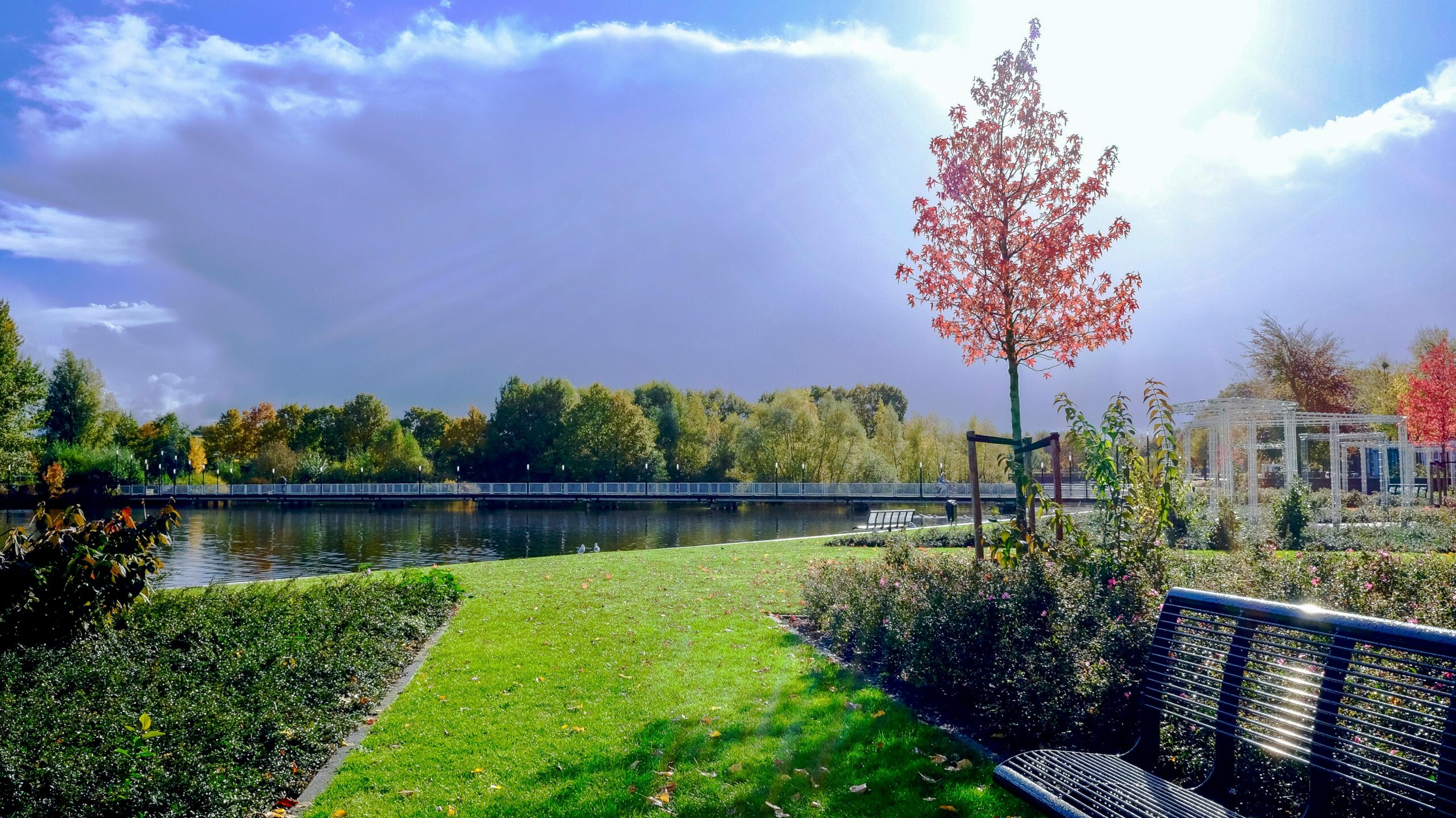How Americans Consume News and Bright Spots in the Local Landscape
As the local news landscape continues to shrink, a large swath of Americans say they absorb community news through the ether and their daily chatter, from going about their day to scrolling on social media to connecting with family and friends. At the same time, a large part of the population says they avoid the news, according to the latest American Communities Project/Ipsos survey of some 5,000 Americans, conducted last summer.
As if to underscore these points, our survey found that 40% of Americans spent zero hours or almost no hours reading online news sites in a day, on average. Another 39% said they spent one hour a day on online news sites. Overall, 21% read such sites for more than one hour in an average day.
How Americans Are Absorbing News
Close to half of Americans believe they stay up to date with local news without seeking it out. Overall, 44% agreed with the statement: “I can be well-informed about local news and events even when I don’t actively follow the news.” The variation among types was limited, in the low to high 40s. A bit higher than average were LDS Enclaves at 51% and Rural Middle America at 50%. Social and religious ties are particularly strong in the Mountain West’s Mormon-dominated communities, while Rural Middle America is dotted with small-town main streets. Meanwhile, Native American Lands and Aging Farmlands were markedly higher at 73% and 75%, respectively. Both community types, while sparse, are known for close-knit connections among residents. However, it should be noted that the sampling in these two community types has to be conducted by phone because the population is too sparse for online panels of respondents.
Social media, too, now plays a major role in the news ecosystem. Indeed, 44% of Americans said: “I learn more about what’s happening in my community on social media than through the news.” Aging Farmlands stood at 59% on this statement. A few rural communities — Native American Lands, Evangelical Hubs, and Hispanic Centers — were above average in the low 50s. As we found in our rural travels, residents may lack broadband internet access, but cellphones are ubiquitous and social media platforms are inescapable there. Social media has become like a public utility or town square in many rural communities. At the other end of the spectrum were Big Cities and Exurbs at 38% and Graying America at 36%.
Relying on close connections for news is not as prevalent as logging in to social media. Just over a third of Americans, 35%, said: “I rely on friends and family to tell me when important things happen in the community.” The variation followed similar patterns. Majorities in the Aging Farmlands and Native American Lands agreed with the statement. Evangelical Hubs and Rural Middle America, too, were notably above average, at 43% and 44% respectively. All others were in the mid- to high 30s.
Why Americans Are Avoiding News
More than two in five Americans, 42%, said: “I avoid the news because it is depressing.” Practicing avoidance for this reason was remarkably consistent, ranging 10 percentage points or fewer, from a high of 49% in the Aging Farmlands to a low of 39% in the more diverse Military Posts.
About one in five Americans, 19%, said: “I avoid the news because it does not really impact my life.” This, too, ranged 10 points or fewer, from 25% in the Aging Farmlands to 15% in the African American South and Working Class Country, concentrated in the Appalachian region.
Different Realities and Bright Spots
The American Communities Project has long detailed Americans’ different realities depending on where they live, and this is true when viewing the news landscape. The decline of local news outlets has been associated with increased polarization, distrust in media, and misinformation, according to Northwestern University's Medill School of Journalism and other academic research, points we documented in our 2023 and 2024 survey results. In particular, news deserts, i.e., counties without professional local news outlets, tend to be in rural ACP types with lower incomes and lower educational levels, as we also previously noted.
More recently, Northwestern’s State of Local News 2024 continued to document the shrinking local news landscape, this time with a somewhat hopeful note: “Since 2005, the nation has lost more than a third of all local newspapers and more than two are still vanishing every week. For the first time since we began keeping statistics, our 2024 report chronicled a net increase in both standalone and network digital news sites. These gains, however, have not been unable to compensate for the significant losses of disappearing newspapers,” according to the report's release.
The 2024 report singled out and detailed these bright spots, places where local news outlets have started in the past five years. As seen below, the 258 outlets dot the country's vast landscape.
An ACP analysis showed that these startup outlets are concentrated in urban-oriented places with higher incomes and educational levels, including Big Cities, Urban Suburbs, College Towns, and Exurbs. Middle Suburbs, also containing larger populations and located near urban centers, were notably lower. Among rural places, Graying America, full of retired, senior Americans, stood out at 8%. The ACP recently described the demographic and cultural changes happening in Graying America communities, which may account for this higher percentage of bright spots.
With the fragmentation of media, Americans' information habits, the reimagining of journalism amid news deserts, and the heightened interest in supporting democracy, the opportunity exists to seed and nurture more bright spots in the news landscape.
